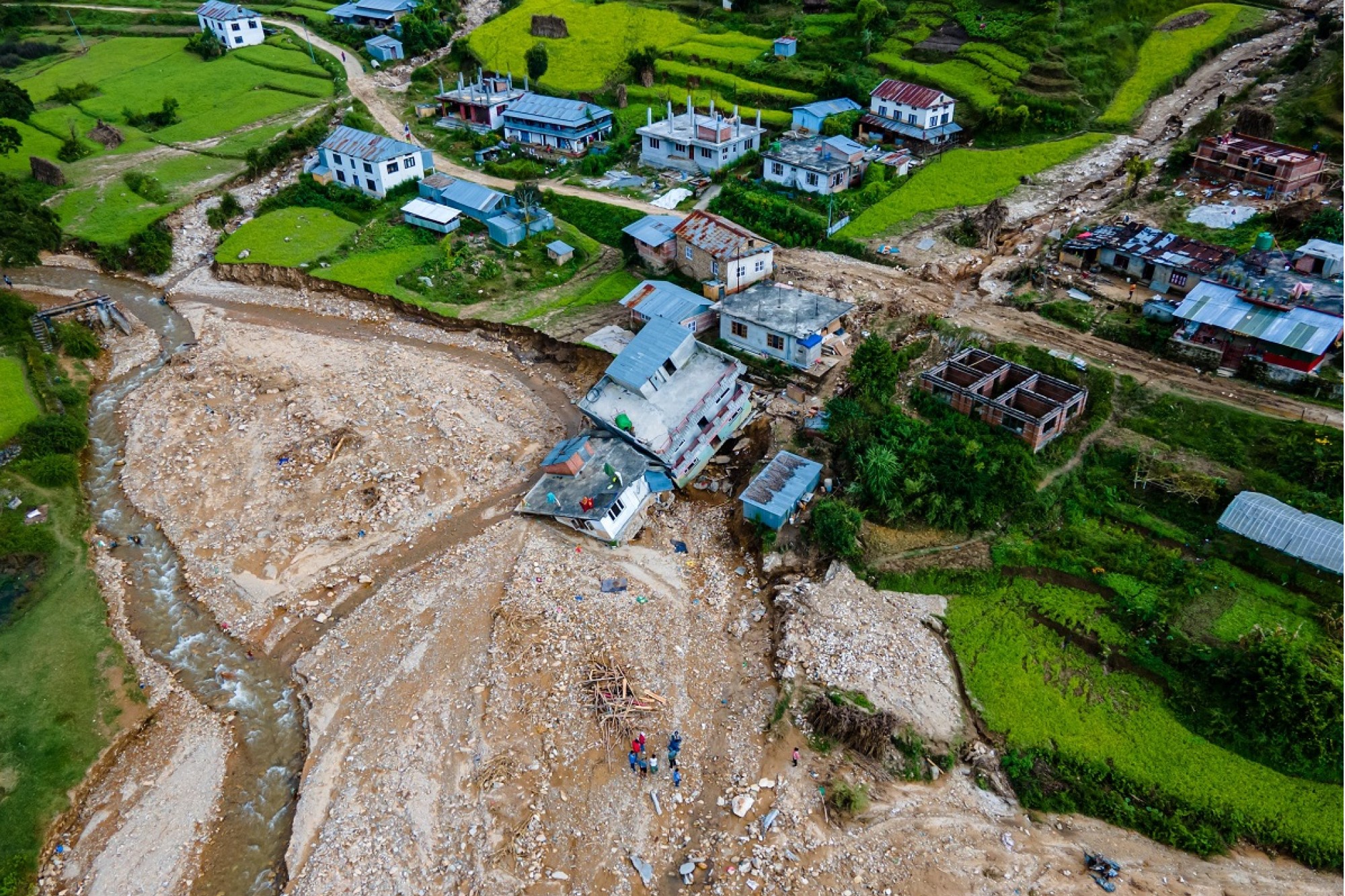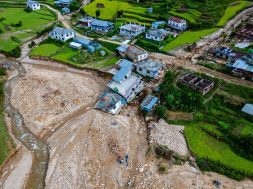India strengthens flood warning systems through digital technology

With rising flood risks, India is turning to digital technologies such as artificial intelligence, the Internet of Things, and geographic information systems to improve early warning and resilience.
India is one of the most flood-prone countries due to its diverse geography and the presence of major rivers like the Ganges, Brahmaputra, and Indus. Floods are the most common natural disaster in the country, and the situation has gotten worse as a result of climate change. If there were eight episodes in the twentieth century, the number has tripled in the twenty-first century, with the last five years accounting for half of all floods this century.
According to the National Disaster Management Authority (NDMA), which is headed by India’s Prime Minister, more than 40 million hectares of the country’s total geographic area (329 million hectares) are flood-prone. On average, 7.5 million hectares are affected each year, and damage to crops, housing, and public services totals nearly 2,000 crore rupees (€21.66 million).
Even though India has made great strides in recent years in digitising water management by embracing cutting-edge technologies like artificial intelligence, big data, and the Internet of Things (IoT), the use of Early Warning Systems (EWS) needs to be increased in order to lessen the effects of floods by facilitating quicker and more efficient responses.
Digital technologies for flood prediction and warning
India’s EWS is a hybrid of traditional and digital systems that gather information from hydrometeorological stations, river and reservoir sensors, and satellite imagery. The main entities in charge of issuing flood alerts are the Central Water Commission (CWC) and the India Meteorological Department (IMD).
According to Tushar Tyagi, Senior Manager at Xylem Vue India, “Advances in digital transformation have enabled the integration of innovative technologies into EWS, improving both the accuracy and speed of flood alerts.” For the expert, there are three technologies that are important in Early Warning Systems:
Big Data & Machine Learning
Massive dataset processing (Big Data) and machine learning algorithms are critical components of flood prediction models because they allow for the analysis of weather patterns, water levels, and topographic conditions.
Internet of Things (IoT) and remote sensors
Deploying IoT sensors in rivers, reservoirs, and high-risk areas allows for real-time data transmission on water levels, flow velocity, and rainfall. These sensors also enable early detection and instant alert transmission.
Geographic Information Systems (GIS) and remote sensing
According to the Xylem Vue expert, satellite imagery from NASA, the Indian Space Research Organisation (ISRO), and other agencies is “essential” for understanding the spread of floods. The use of GIS enables the creation of risk maps in real time, which aids decision-making.”
However, there are several challenges that will shape the agenda for the implementation of Early Warning Systems in India. Ankur Chaurasia, Senior Solution Architect at Xylem Vue India, explains
Key barriers to EWS expansion in the country: “The lack of monitoring stations in some regions, combined with limited internet connectivity, makes it difficult to collect accurate data and transmit alerts. Additionally, greater public-private collaboration, as well as increased awareness and education about these warning systems, is required to ensure an effective response.”
Strategies for a more effective EWS
Improving the Early Warning System entails implementing strategies that strengthen India’s resilience to extreme monsoon-related events. Tushar Tyagi suggests the following strategies to strengthen India’s EWS: Experts at Xylem Vue recommend investing in IoT sensors and meteorological stations to improve forecast accuracy.
Improvements to data infrastructure:
Cloud-based technologies are critical to improving the efficiency of data collection and distribution.
Tyagi emphasises the importance of integrating artificial intelligence to improve efficiency through advanced predictive models and accurate event forecasting.
Community participation and education:
The experts conclude by highlighting the significance of putting in place awareness and training initiatives to make sure that communities comprehend and utilise alerts efficiently.
There is no doubt that digitalisation has greatly improved India’s ability to predict and manage floods, but challenges still exist. To improve its EWS, India must continue to invest in technology, increase stakeholder collaboration, and raise public awareness. With the right strategies, the country could significantly reduce the impact of floods, saving lives and protecting the economy.
For more details, visit: https://www.xylem.com/en-us/brand/vue/
Cookie Consent
We use cookies to personalize your experience. By continuing to visit this website you agree to our Terms & Conditions, Privacy Policy and Cookie Policy.










